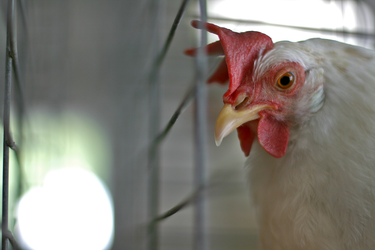ZBA applicant seeking chickens could spur change to Altamont law
ALTAMONT — A resident looking to keep chickens on his property is likely to strike out with his request to the Altamont Zoning Board of Appeals, but he said he’s willing to petition the board of trustees to change the law that prohibits the keeping of fowl within village limits.
He is also going ahead with a public hearing in hopes it will publicize his situation.
The use variance request was made by John Polk and and his wife, Rebecca Stumpf, to allow for up to six chickens on their nearly 19.5-acre Bozenkill Road property.
“Historically, this property has been a working farm,” Polk told the zoning board on Tuesday. “As we understand it with both large and small animals; there’s an existing chicken coop on the property.”
“Under the New York State law and the village code, it’s a very high standard for a use variance because you’re essentially coming to the zoning board of appeals,” village attorney Allyson Phillips said during the Jan. 11 meeting, “[and] asking the board to allow a use that is otherwise prohibited under the village’s local laws. And that means it’s prohibited for everyone in the village.”
The way the law is set up, Phillips said, Polk would have to show a unique hardship in order to meet the standard to obtain a variance which would allow him to use his property “in a manner that’s prohibited under the village’s local laws for all residents.”
The way unnecessary hardship is established is through a four-part test laid out in the zoning code:
— The applicant cannot realize a reasonable return, provided that lack of return is substantial as demonstrated by competent and unbiased financial evidence;
— The alleged hardship relating to the property in question is unique and does not apply to a substantial portion of the district or neighborhood;
— The requested use variance, if granted, will not alter the essential character of the neighborhood; and
— The alleged hardship has not been self-created.
“For a use variance, it’s very different than an area variance,” Phillips said. “Where with an area variance, you’re kind of balancing the benefit the applicant is seeking to achieve versus the detriment to the community. And your inability to satisfy any one factor of the area variance test doesn’t kill the application.”
She continued, “That is not the same for a use variance. For a use variance to establish that unnecessary hardship, you’ve got to show you can meet each of the four factors in the test under your law.”
Polk asked if instead of having to display hardship, “could we demonstrate unique circumstances?” Polk said the majority of properties in Altamont are less than an acre in size, while he and his wife have almost 20 acres of land, noting “we’re very far separated from anyone else.”
Polk asked if it were possible to proceed this way, which Phillips didn’t immediately dismiss out-of-hand.
“Based on, you know, the circumstances of your property, I think, arguably, you may be able to satisfy factor two and three, because, you know, you are in an isolated area, no one would see it,” she said.
But Phillips came back to the high bar for a use variance and offered a suggestion.
“Anytime you’re proposing a use of your property that’s otherwise prohibited under the local law, you’re asking for a use variance. And again, it’s a very high standard under the law for a reason, because they should very rarely be granted,” Phillips said. “The relief in a situation, if you can’t demonstrate unreasonable hardship, by satisfying all four of the factors in your law is for the community to petition their local government to make a change in the statute.”
Chairman Danny Ramirez asked if it would be reasonable to propose revisiting the keeping of chickens in the village.
Phillips said it would because she thought “the standard in the law is so high for use variance. I mean, it’s virtually impossible for anyone who has a residential property … to obtain a use variance to allow them to have chickens on their property, just because it is such a high standard.”
A chicken law proposal had come before the village board a few years ago that was ultimately tabled.
Polk told the zoning board that he’d be willing to petition the village board to change the law, but he didn’t want to pull his application because he didn’t know if it would be “advantageous to have the public hearing on our specific case in order to promote the idea more thoroughly in the community, to give it more air.”
A public hearing on Polk’s application was set for Feb. 8.



